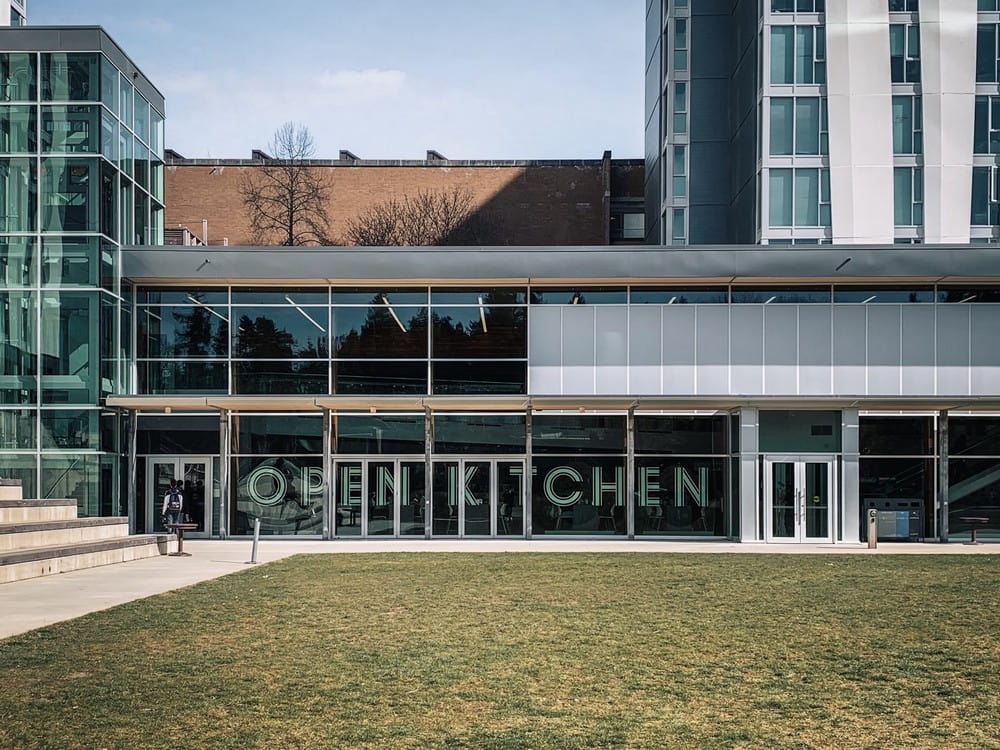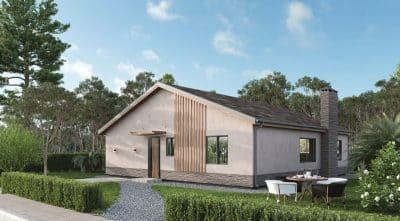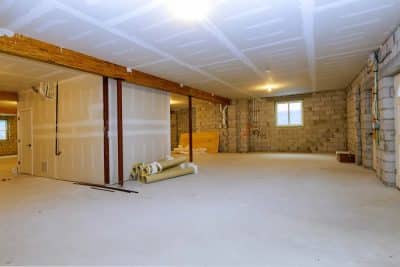Commercial exterior design is more than aesthetics. It’s a strategic tool that builds brand visibility, supports customer experience, and ensures lasting performance.
The best exteriors combine architectural harmony, high-performance materials, impactful signage, and sustainable features. When done right, a commercial facade becomes a magnet for attention and a driver of business growth.
Beyond style, effective design must consider accessibility, energy efficiency, compliance, and brand identity. This article outlines the essential principles of commercial exterior design, with practical guidance for creating façades that perform as well as they look.

The Role of Exterior Design in Business Success
Your building’s exterior sets the tone for everything inside. It tells customers who you are before they ever walk through the door. A cohesive, well-maintained façade builds credibility, while a neglected exterior can turn people away at a glance.
Great design translates directly into revenue. Eye-catching storefronts increase foot traffic and invite people to stay longer. Branded architectural elements, polished awnings, and illuminated signage create lasting impressions that drive referrals and repeat business.
If your exterior is overdue for an update, start simple. Does your facade reflect your current brand? Is your signage clear, well-lit, and inviting? Even small improvements like pressure-washed walkways, fresh paint, or updated lighting can significantly elevate curb appeal and customer perception.
Essential Design Elements for Maximum Impact

A commercial exterior must go beyond surface-level beauty. It should reinforce brand identity, provide clear navigation, and stand up to real-world use. The following design fundamentals consistently deliver the greatest return:
- Architectural cohesion – Your building’s style should reflect your brand personality. A law firm may opt for clean, formal lines, while a boutique café might use reclaimed wood and vintage lighting. Consistency across materials, colors, and signage builds trust and recognition.
- Strategic color & materials – High-contrast color palettes enhance visibility, while materials like powder-coated metals, architectural-grade composites, or treated wood offer durability and weather resistance. Select finishes that resist fading and wear over time.
- Effective signage & wayfinding – Your signage is your silent salesperson. Use bold, legible typography and ensure lighting makes signs readable both day and night. Position directional signs to guide customers seamlessly from the curb to entry. For businesses in the Northeast, integrating professionally designed commercial awnings and canopies in NJ can enhance branding while offering weather protection and improved visibility.
These elements work together to create a cohesive, professional image. When designed with care, your exterior becomes an extension of your brand and a long-term business asset.
Practical Considerations for Long-Term Performance
Exterior environments are tough on buildings. Rain, UV exposure, seasonal changes, and high traffic all take a toll. Select materials that are designed for commercial-grade performance, such as fiber cement siding, aluminum composite panels, or UV-stable coatings. These reduce ongoing maintenance and keep your property looking sharp year-round.
Lighting should be both functional and brand-aligned. Energy-efficient LED fixtures improve visibility, enhance safety, and lower electricity costs. Use accent lighting to highlight signage, awnings, and architectural details, ensuring your space is welcoming after dark.
Don’t overlook accessibility. Adhere to ADA requirements for ramps, handrails, and entry widths. Install non-slip surfaces in high-traffic zones and inspect regularly for hazards. These improvements not only protect customers but also show a commitment to inclusive design.
Sustainability in Commercial Exterior Design
Modern exterior design must be environmentally responsible. Green design lowers operating costs, reduces environmental impact, and signals your brand’s commitment to sustainability, something today’s consumers increasingly value.
- Energy-Efficient Materials – Choose insulated panels, cool roof coatings, and recycled building products to regulate interior temperatures and reduce HVAC loads.
- Water-Smart Landscaping – Native plants, drip irrigation systems, and permeable pavers minimize water waste and prevent runoff. Decorative rain chains or cisterns can add style while harvesting rainwater for reuse.
- Renewable Energy Integration – From solar-powered signage to full-panel installations, renewable energy elements not only reduce utility bills but reinforce a forward-thinking brand image.
Sustainable upgrades are now a necessity. They build resilience, reduce long-term costs, and help position your business as a leader in environmental responsibility.
Navigating Regulations and Environmental Challenges
Compliance is key in any commercial project. Before starting exterior renovations, consult your local planning department. Understand zoning rules, signage codes, height limits, and setback requirements to avoid expensive redesigns or permit delays. A pre-planning consultation with city officials can fast-track approvals and identify potential red flags.
Climate matters. In coastal or hurricane-prone areas, install impact-rated windows and reinforced framing. For sun-drenched regions, consider sunshades, reflective materials, and thermal insulation. Working with experienced architects and signage professionals familiar with your region’s climate ensures your exterior is built to last.
Community concerns can slow progress. Present renderings to neighbors or business districts early in the process. Offering visual previews and addressing issues like noise, light spill, or style compatibility builds goodwill and avoids resistance later. Always document regulatory approvals thoroughly to keep your project moving smoothly.
Conclusion
A well-designed commercial exterior is a strategic business tool. By combining aesthetics, functionality, and sustainability, businesses can create environments that impress customers, reduce maintenance, and increase brand visibility.
Whether it’s upgrading your signage, investing in durable materials, or navigating local building codes, each decision has a long-term impact. Thoughtful exterior design boosts foot traffic, reinforces identity, and creates spaces that truly perform. Use these principles to build an exterior that works as hard as you do.








